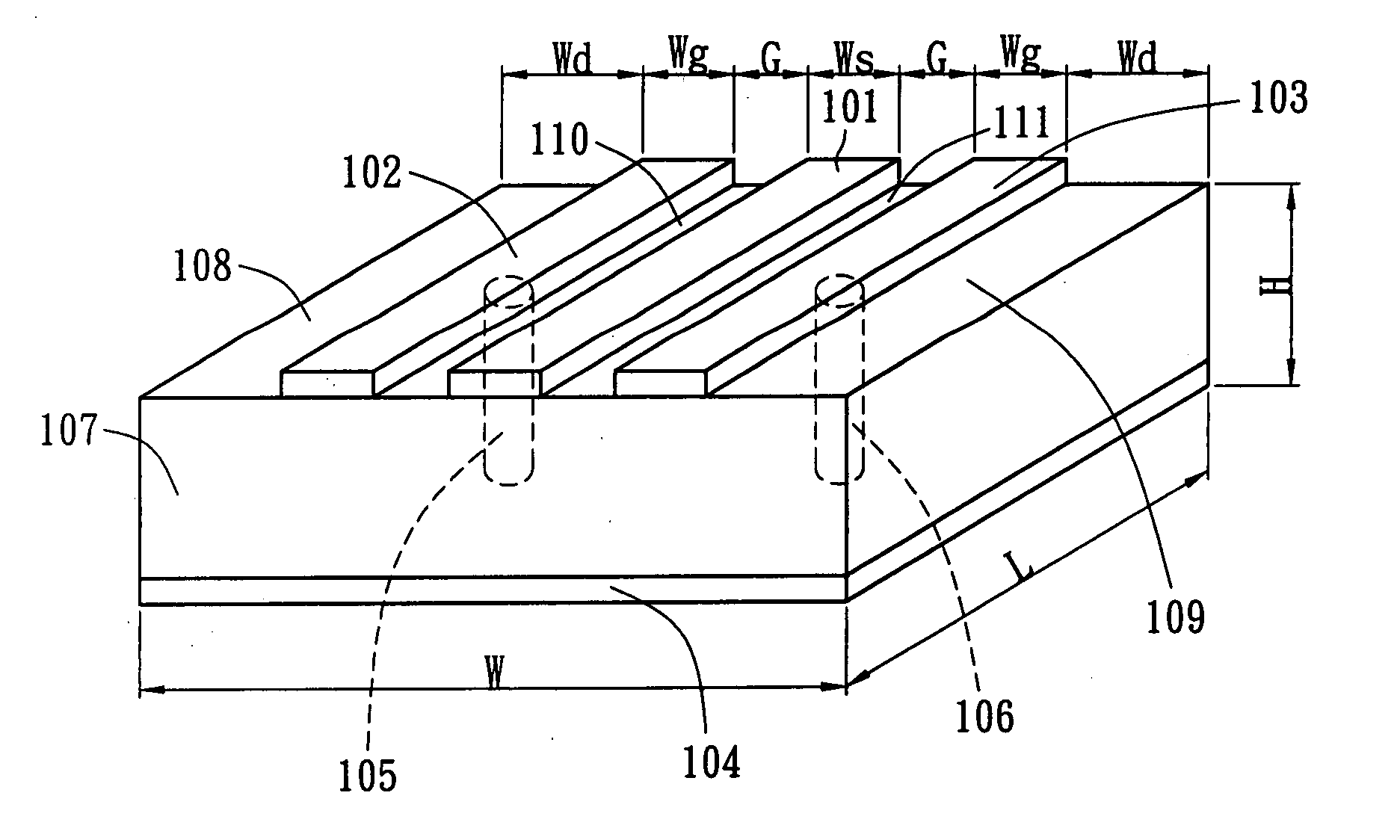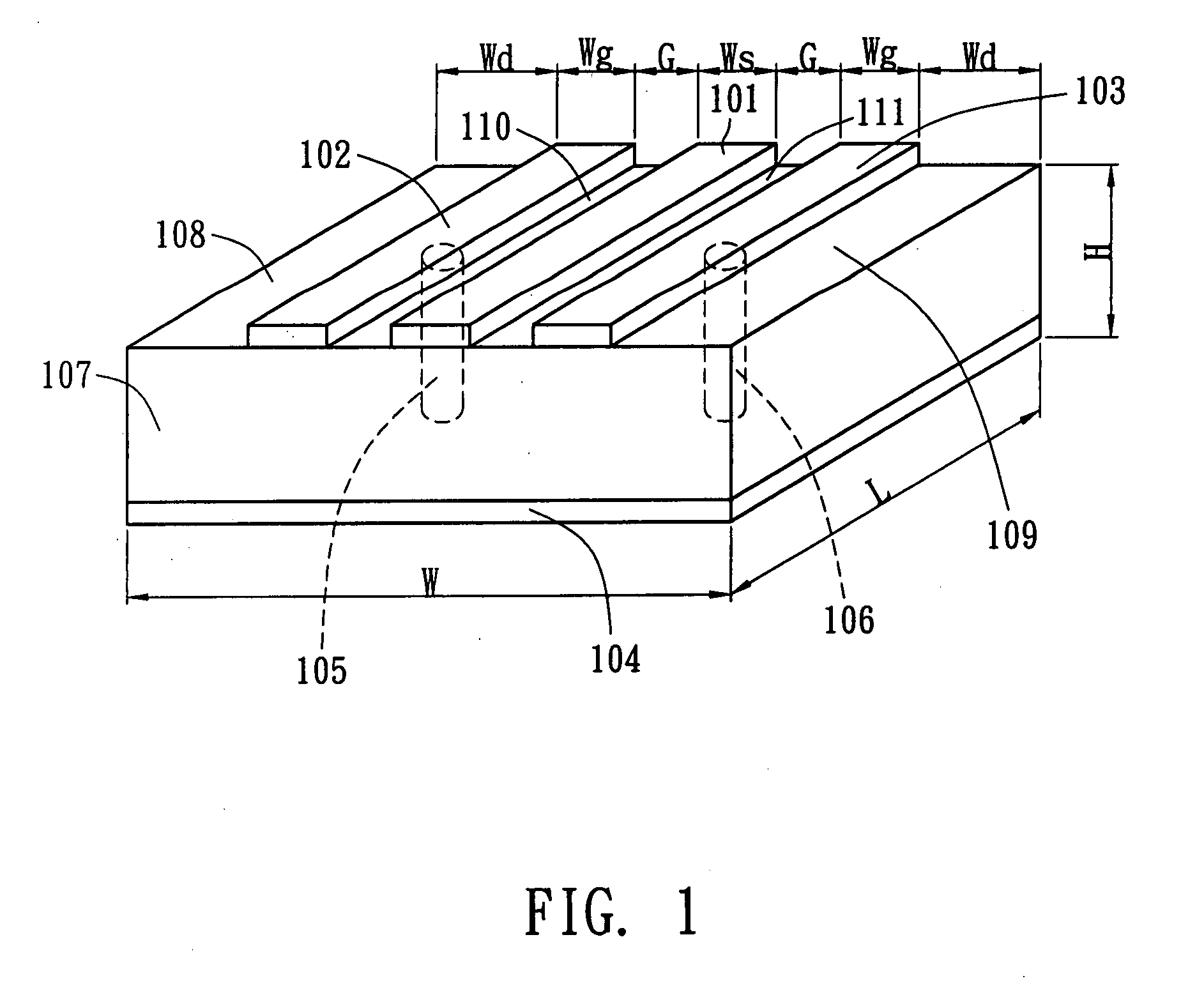Methods for designing switchable and tunable broadband filters using finite-width conductor-backed coplanar waveguide structures
a coplanar waveguide and conductor-backed technology, applied in the field of switchable and tunable finite-width conductor-backed coplanar waveguide resonators and filters, can solve the problems of limited switchable types and tunable frequency ranges, limited frequency response, and insufficient miniaturization to meet the need for switchable and tunable filters for broadband and multi-band applications
- Summary
- Abstract
- Description
- Claims
- Application Information
AI Technical Summary
Benefits of technology
Problems solved by technology
Method used
Image
Examples
Embodiment Construction
[0040]FIG. 1 illustrates a finite-width conductor-backed coplanar waveguide structures of this invention, FIG. 2 is the top view of FIG. 1; FIG. 3 is the cross sectional view of FIG. 1; herein 101 represents the metallic signal waveguide of the coplanar waveguide; 102 and 103 represent the metallic ground waveguides individually; 104 represents the metallic back conductor; 105 and 106 represent via holes including the metallic conducting posts between metallic ground waveguides 102,103 and the metallic back conductor 104; 107 represents the dielectric material; 108 and 109 represent individually the surfaces of the dielectric material without covering by metallic materials; 110 and 111 represent individually the surfaces of dielectric material 107 between metallic signal waveguide 101 and metallic ground waveguides 102 and 103; FIG. 1 shows the structures that comprising single layer dielectric material 107, and via holes including the metallic conducting posts 105 and 106, which co...
PUM
 Login to View More
Login to View More Abstract
Description
Claims
Application Information
 Login to View More
Login to View More - R&D
- Intellectual Property
- Life Sciences
- Materials
- Tech Scout
- Unparalleled Data Quality
- Higher Quality Content
- 60% Fewer Hallucinations
Browse by: Latest US Patents, China's latest patents, Technical Efficacy Thesaurus, Application Domain, Technology Topic, Popular Technical Reports.
© 2025 PatSnap. All rights reserved.Legal|Privacy policy|Modern Slavery Act Transparency Statement|Sitemap|About US| Contact US: help@patsnap.com



